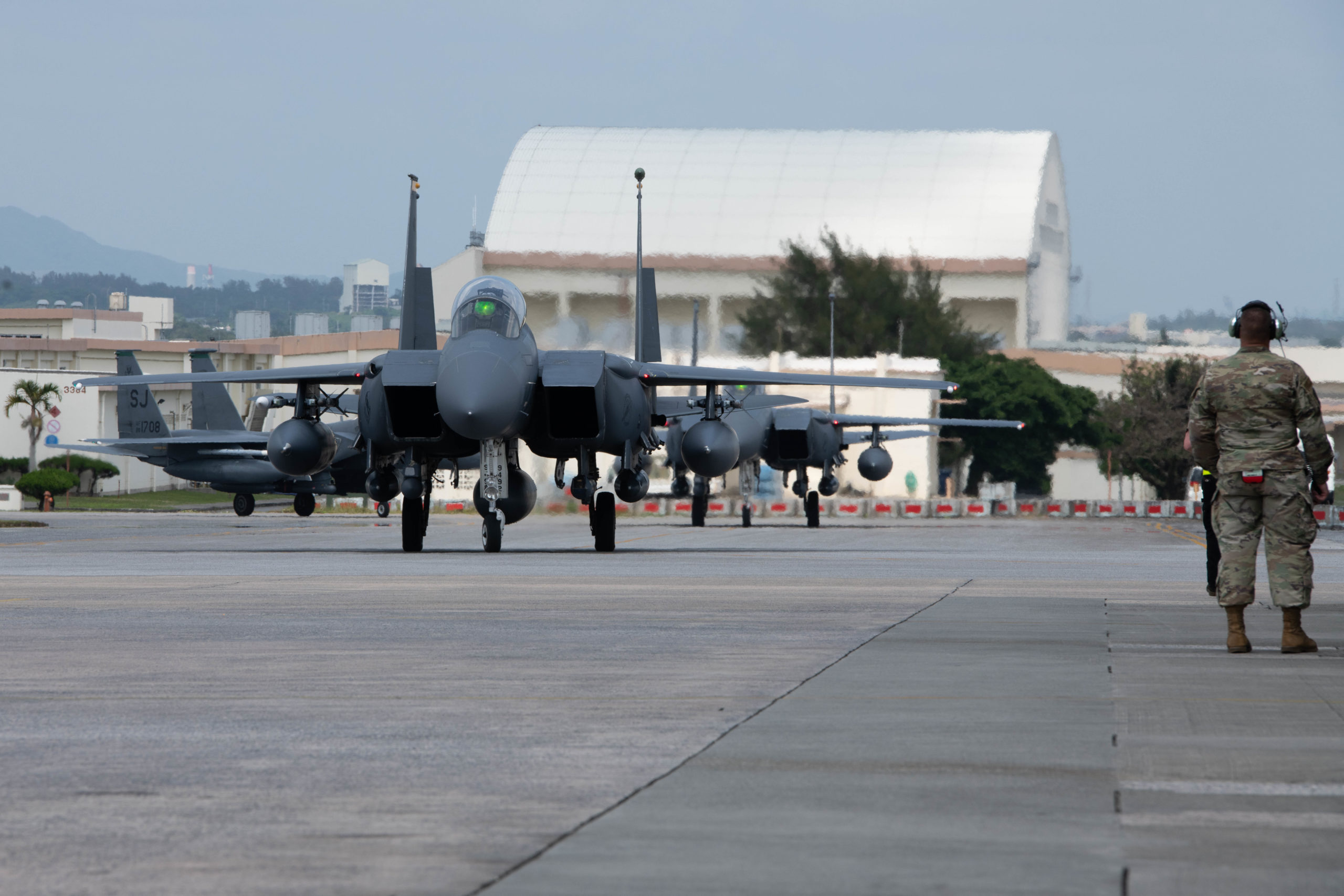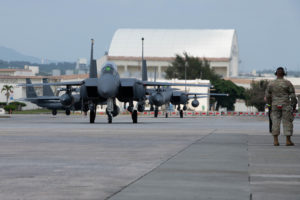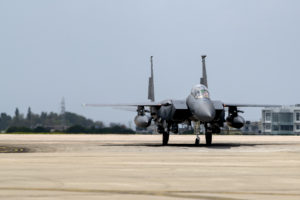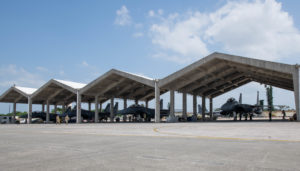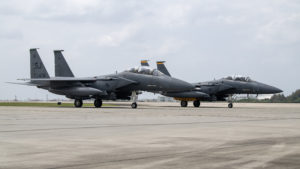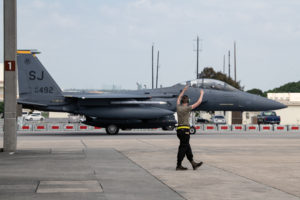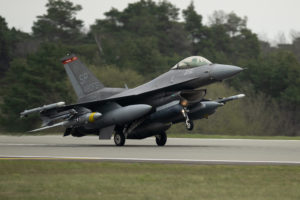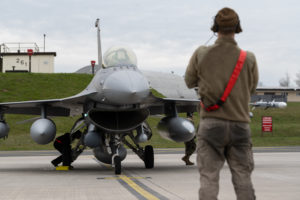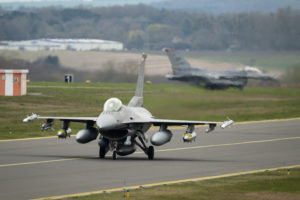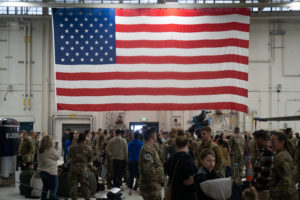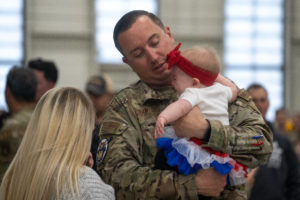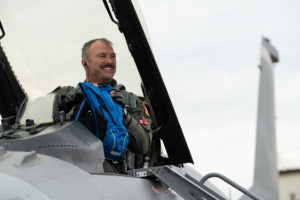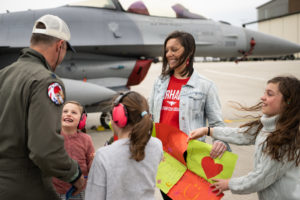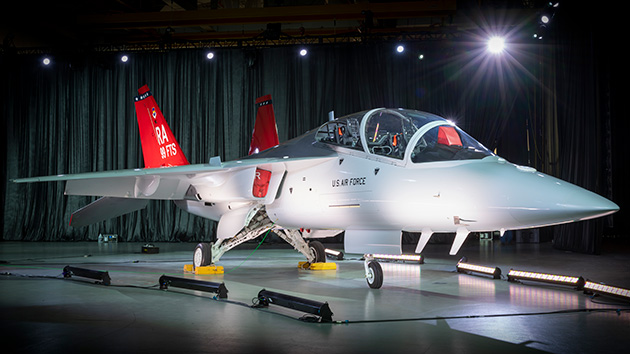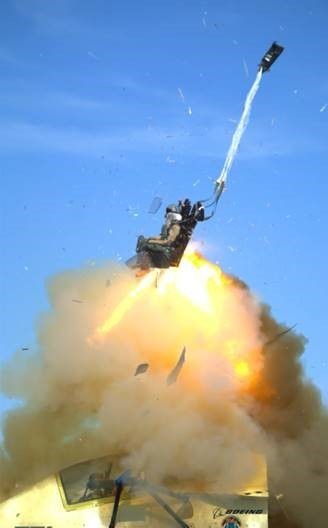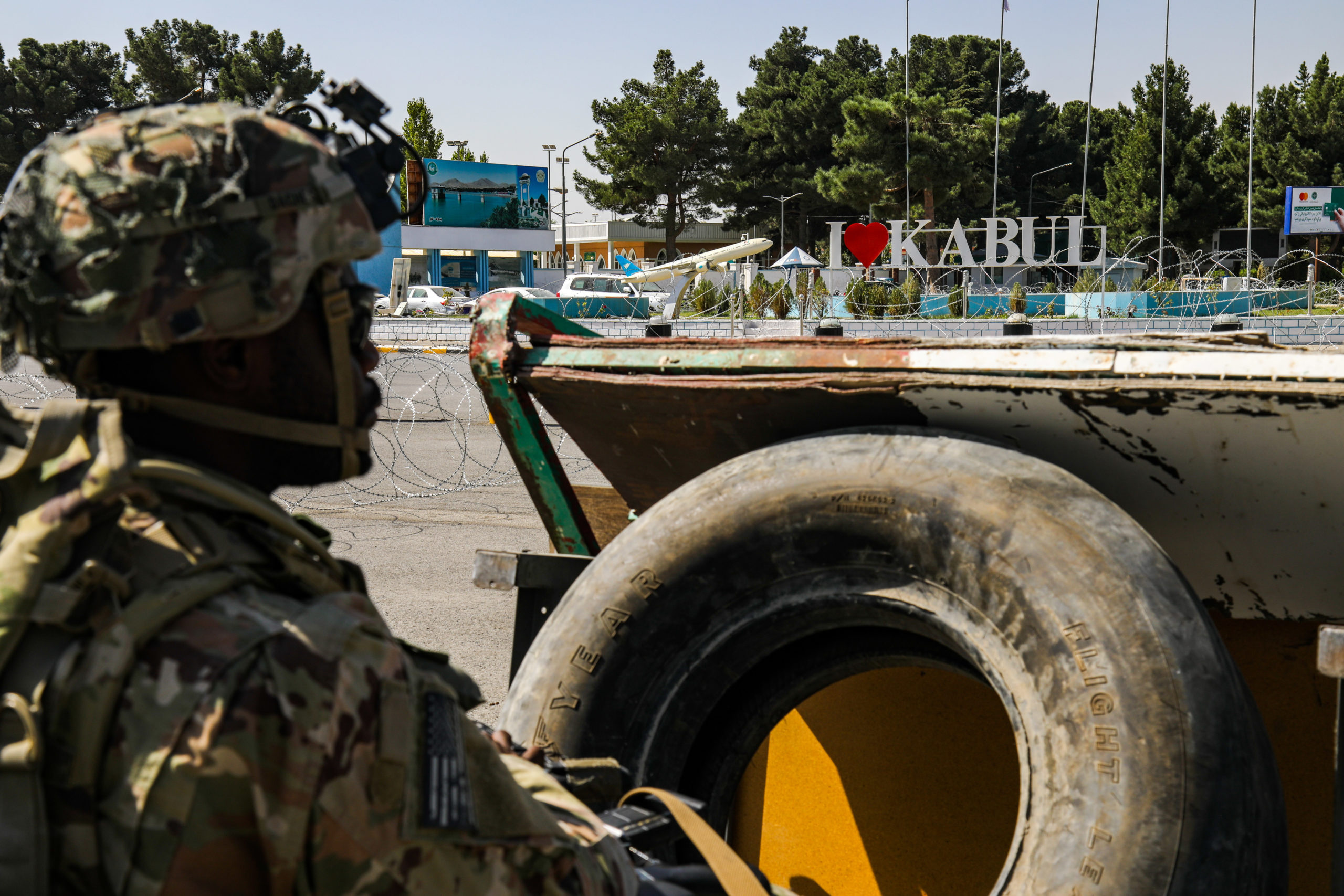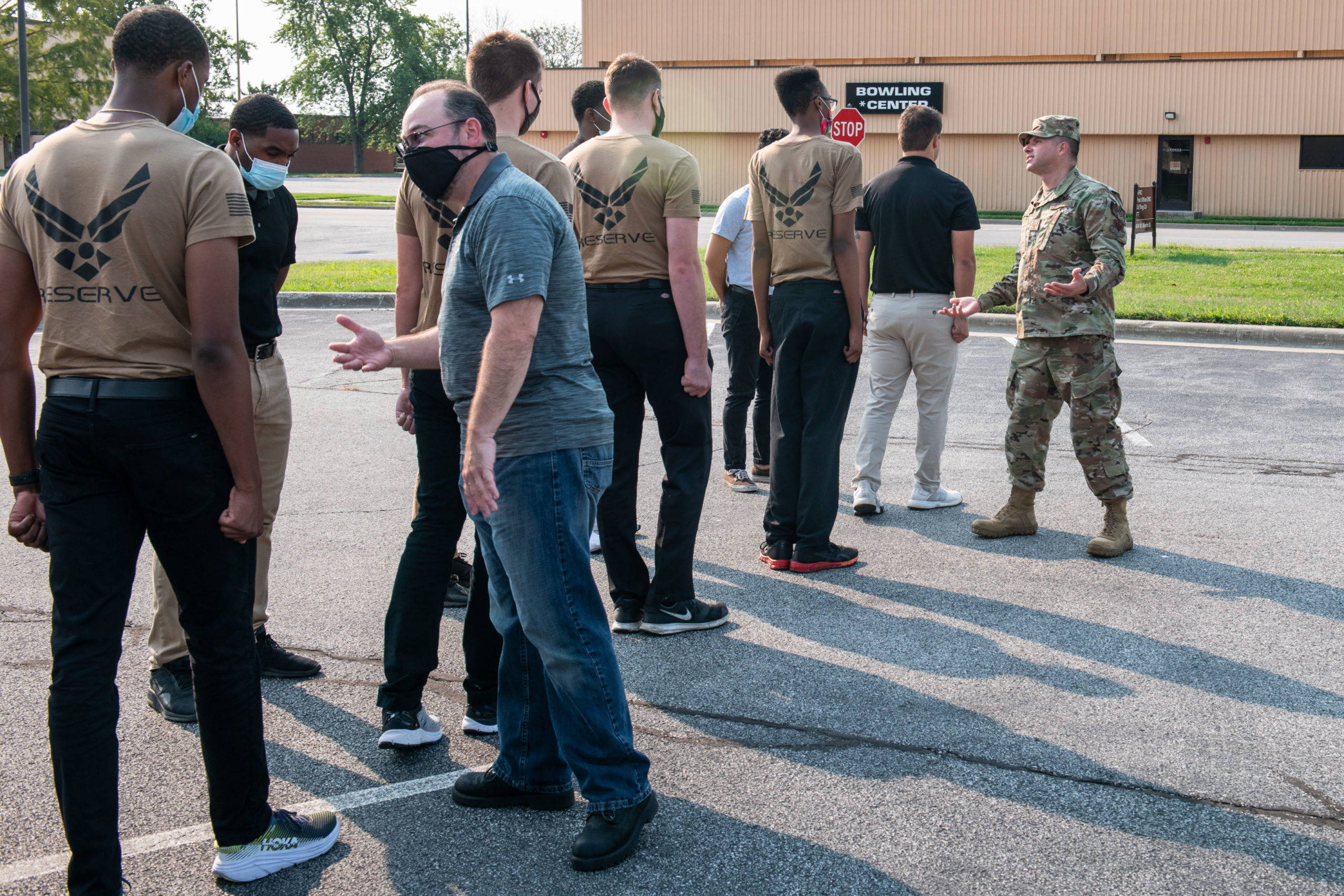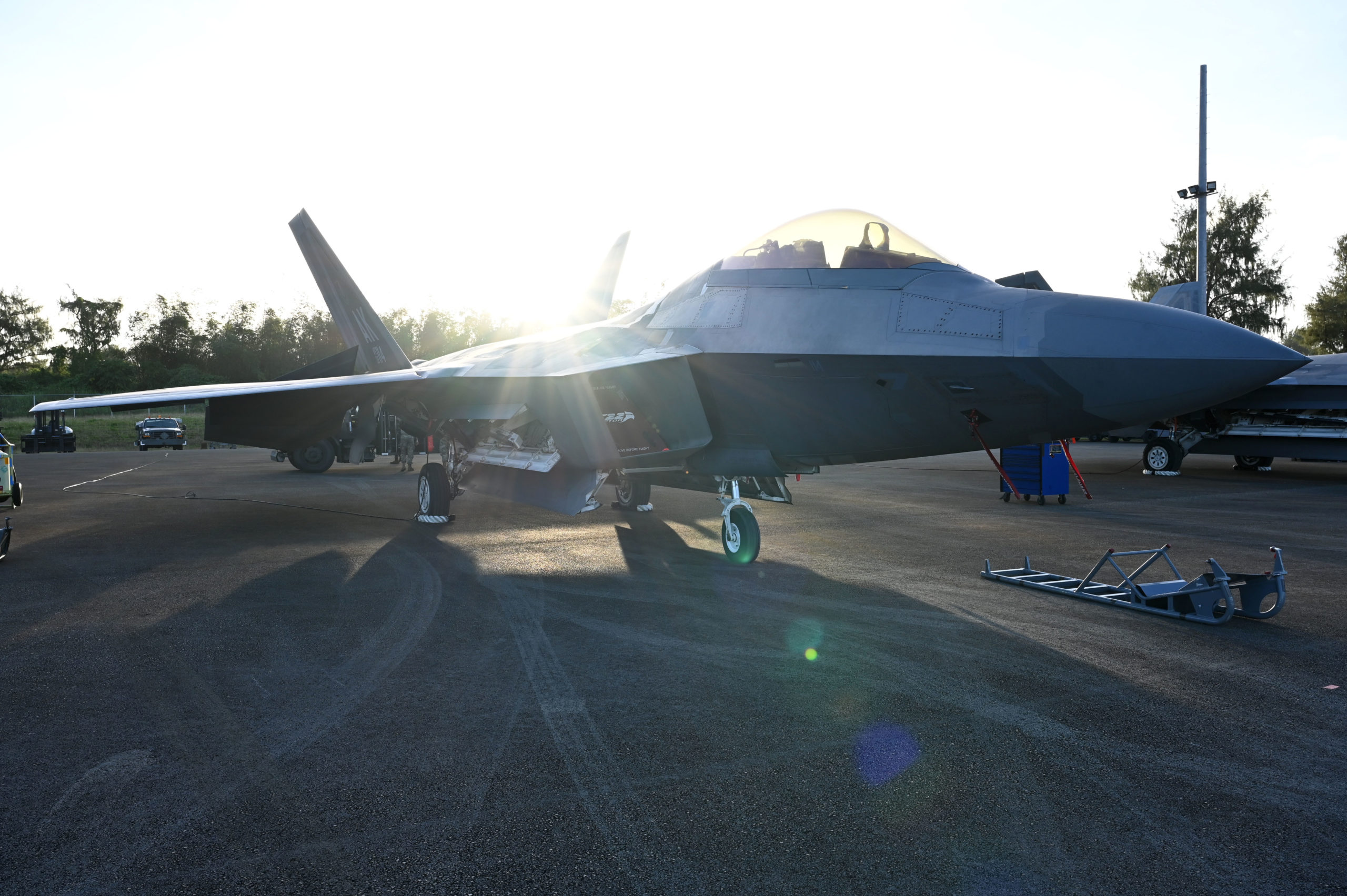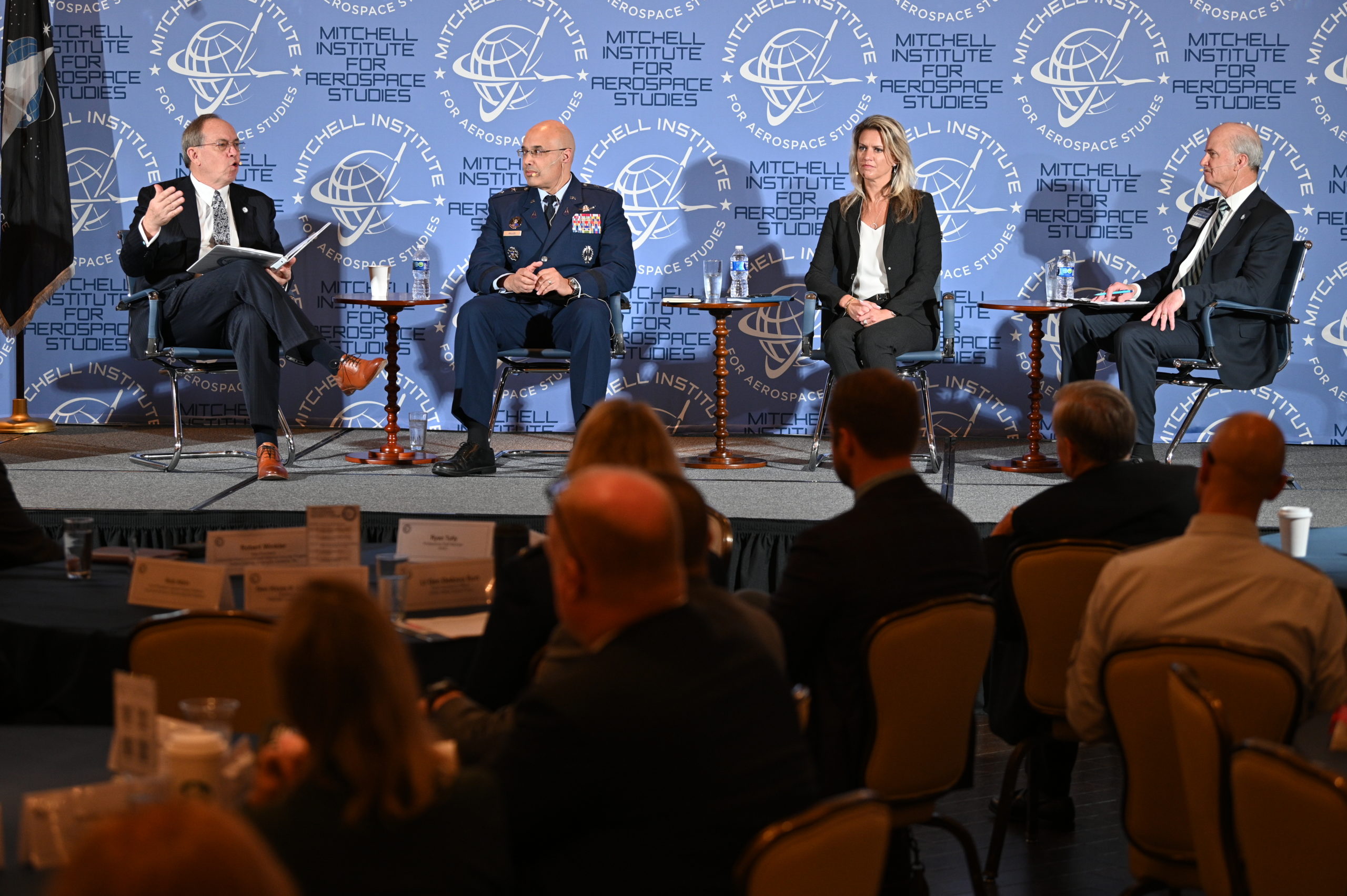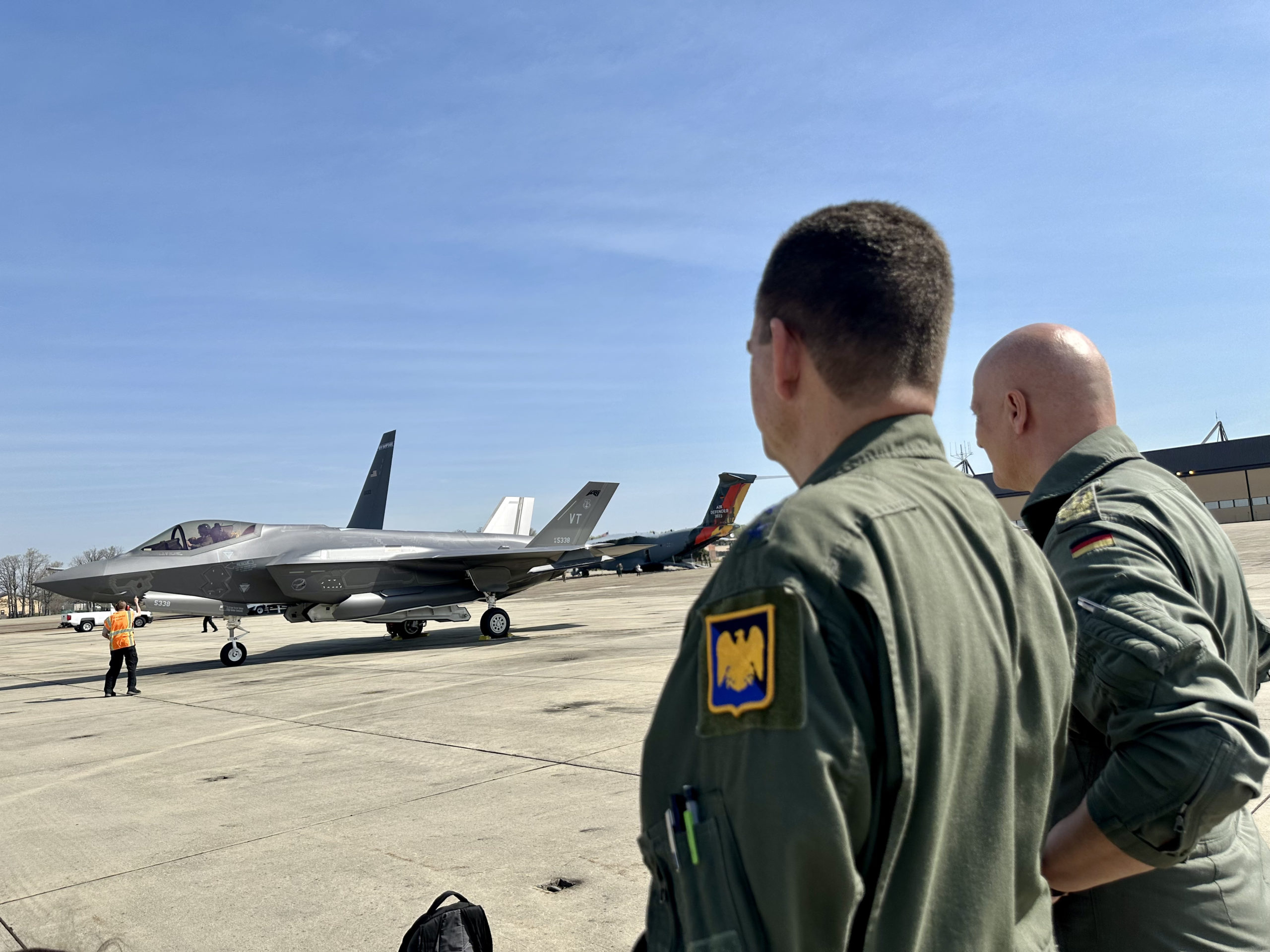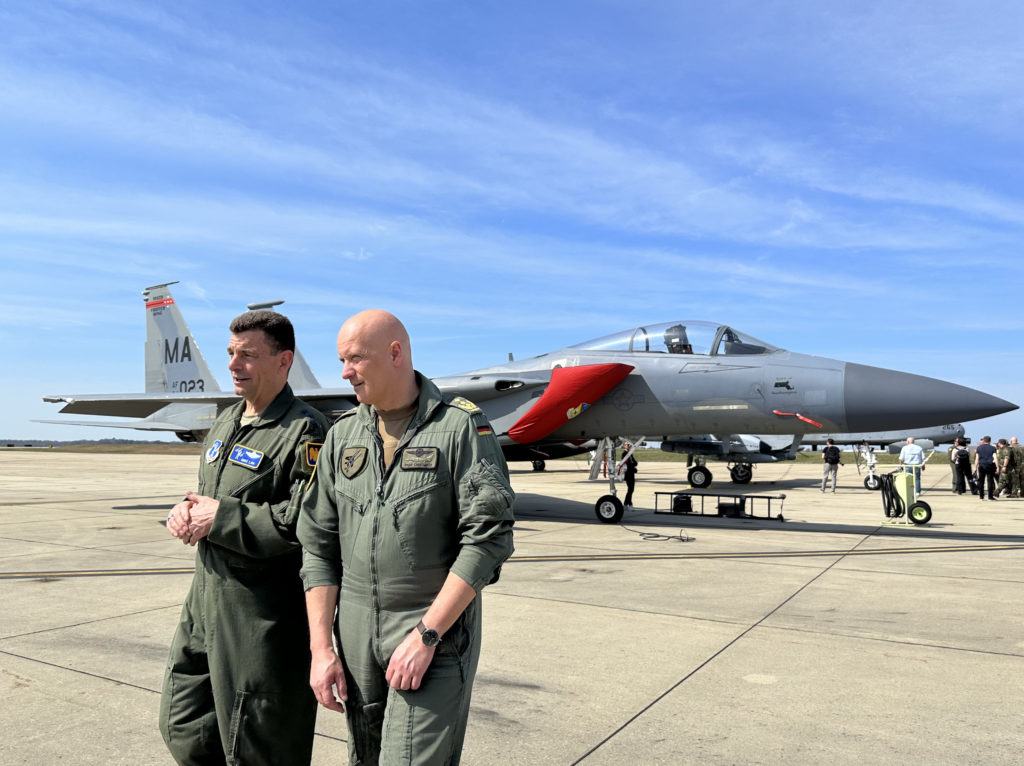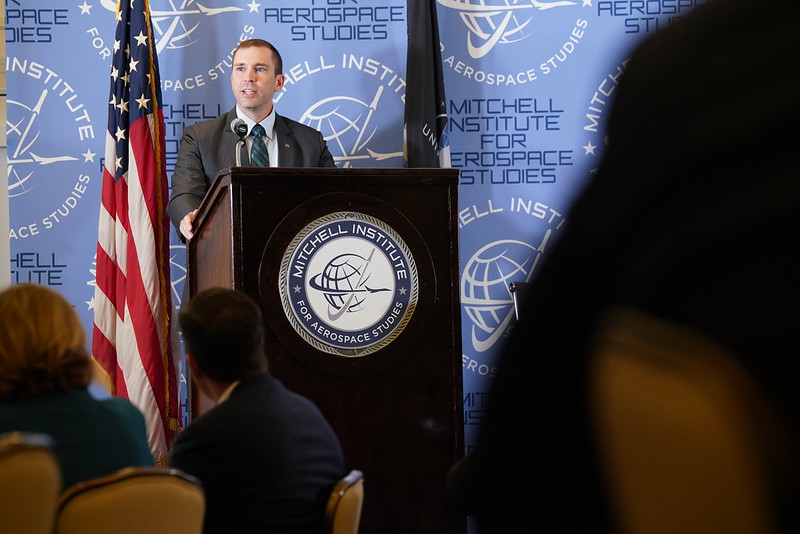F-15E Strike Eagles deployed to Kadena Air Base, Japan in April, joining F-35s to bolster the Air Force’s fighter fleet on the strategically important island in the western Pacific.
Meanwhile, the F-16CMs and F-22s that were previously forward deployed to Kadena have returned home, according to their respective home bases. The Air Force is rotating fighters through Kadena as it sends the aging F-15C/D fleet back to the United States after more than 40 years of permanent Eagle operations on the island. Save for the A-10, the Air Force has had every active type of fighter aircraft cycle through Kadena in the last five months: F-15C/Ds, F-15Es, F-16s, F-22s, and F-35s.
“Modernizing capabilities in the Indo-Pacific theater remains a top priority,” Kadena Air Base’s 18th Wing said in a news release. “This reception of advanced fighter aircraft at Kadena ensures the 18th Wing remains postured to deliver lethal and credible airpower to ensure the defense of U.S. allies and a free and open Indo-Pacific.”
On April 8, F-15Es from the 336th Fighter Squadron at Seymour Johnson Air Force Base, N.C. touched down in Okinawa, according to the Air Force.
That same day, F-22s Raptors and Airmen from the 525th Fighter Squadron assigned to Kadena headed home to Joint Base Elmendorf-Richardson, Alaska. On April 10, F-16CMs from the 480th Fighter Wing returned to Spangdahlem Air Base, Germany.
Kadena’s two-squadron F-15C/D fleet, 48 strong before the drawdown began, is gradually being sent to the Boneyard or Air National Guard units. The Air Force has promised to put newer and more advanced fighters on Kadena to make up for the lack of a permanent presence.
In November, the Alaskan F-22s were the first new rotational unit deployed to the key southern Japanese island, which lies some 450 miles from Taiwan—the closest U.S. airbase to the self-governing island China claims as its own. F-16CMs later joined the Raptors in January 2023.
In March, F-35s from the 355th Fighter Squadron at Eielson Air Force Base, Alaska deployed to Kadena. After a roughly two-week overlap, the F-16s and F-22s have now departed. F-22s were originally supposed to replace Eagles as the Air Force’s main air-to-air fighter, but further production was cancelled in 2009. Kadena’s F-15s are the last Eagles in service in the Active-Duty force. F-15Es are multi-role fighters, unlike the original F-15.
“The F-15E is a proven combat platform that brings some unique capabilities into our already formidable mix of aircraft here at Kadena,” Col. Henry Schantz, 18th Operations Group commander, said in a news release.
The F-22s had an eventful deployment to the western Pacific, becoming the first fifth-generation fighters to deploy to Tinian and the Philippines. JBER said the aircraft flew 1,100 sorties during their four-plus month deployment. The F-16s stayed around three months and their deployment generated fewer headlines. The deployment of F-15Es and F-35s —along with the remaining F-15C/Ds—ensures Kadena will have a mix of fourth- and fifth-generation aircraft for now.
